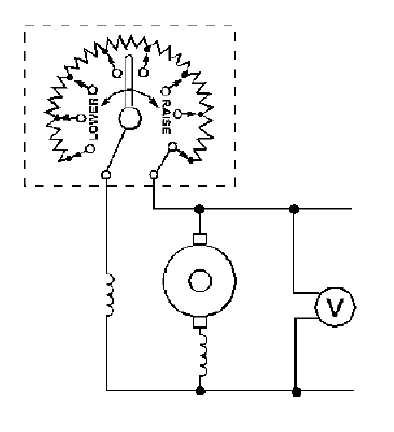1-22
Figure 1-21.—Hand-operated field rheostat.
This type of field rheostat contains tapped resistors with leads to a multiterminal switch. The arm of
the switch may be rotated to make contact with the various resistor taps. This varies the amount of
resistance in the field circuit. Rotating the arm in the direction of the LOWER arrow (counterclockwise)
increases the resistance and lowers the output voltage. Rotating the arm in the direction of the RAISE
arrow (clockwise) decreases the resistance and increases the output voltage.
Most field rheostats for generators use resistors of alloy wire. They have a high specific resistance
and a low temperature coefficient. These alloys include copper, nickel, manganese, and chromium. They
are marked under trade names such as Nichrome, Advance, Manganin, and so forth. Some very large
generators use cast-iron grids in place of rheostats, and motor-operated switching mechanisms to provide
voltage control.

